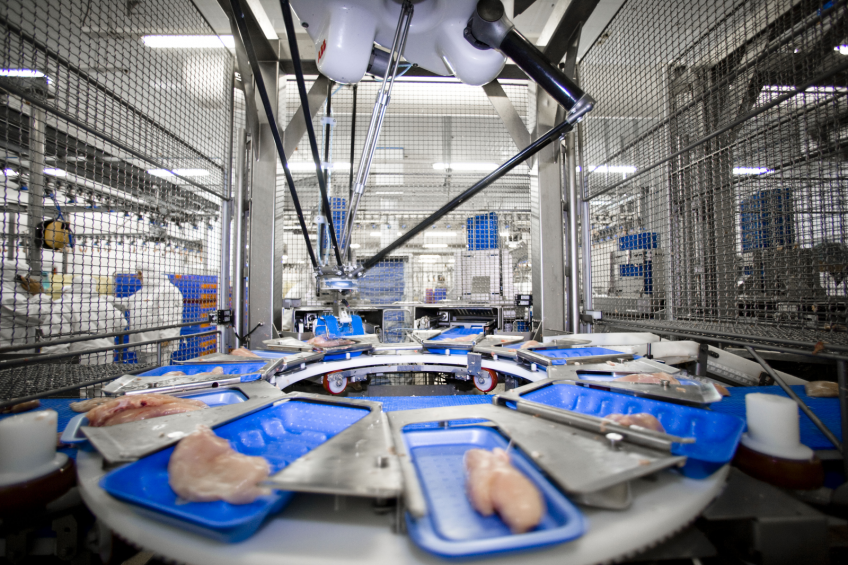Reducing Campylobacter in poultry

Food borne diseases are receiving high priority in human nutrition. Campylobacter is a major cause of such a gastrointestinal disease, which to a large extent is attributed to poultry. Tackling this contamination throughout the chain seems to be the solution.
By Ana B. Vidal, John D. Rodgers and Rob H. Davies, Dept. of Bacteriology and Food Safety, AHVLA, Surrey, UK
Campylobacter is the most commonly reported food-borne bacterial gastrointestinal disease in people worldwide. It is estimated that there are, approximately, nine million cases of human campylobacteriosis per year in the EU. Molecular and epidemiological studies indicate that broiler chickens are an important source for human infections. Campylobacter are ubiquitous bacteria, frequently associated with the contamination of broiler flocks. Campylobacter-colonised broiler chickens can harbour very high numbers of these bacteria in their intestines and are the primary source for contamination of the carcases during slaughter. Handling, preparation and consumption of broiler meat may account for 20% to 30% of the human cases while 50% to 80% may be attributed to the chicken reservoir as a whole suggesting that there are additional routes other than food.
Variation in prevalence
Over the last 10 years or so, several countries have undertaken national cross-sectional or longitudinal surveillance of Campylobacter. These studies clearly indicate that flocks become colonised with Campylobacter over time and that at slaughter between 18% and 90% of flocks are Campylobacter positive. The prevalence of positive flocks varies substantially by country. In general, more northerly European countries, such as Finland, Sweden and Norway have a lower prevalence (10%-30%), indicating that geographical factors are likely to be important but also highlighting potential differences in broiler management practices.
A harmonised EU baseline survey carried out in 2008 found an overall EU prevalence of Campylobacter-colonised broiler batches of 71%, and 76% of broiler carcases were found contaminated with Campylobacter. This study showed great variation in prevalence between Member States (5-100%). The level of Campylobacter contamination in broiler carcasses also varied widely between countries and between slaughterhouses within countries.
Handling, preparation and consumption of broiler meat accounts for 20% to 30% of human disease from Campylobacter contamination
Understanding sources
A large body of research carried out in the past 20 years has focused on understanding the sources and routes of colonisation for broiler flocks in order to develop targeted interventions that can minimise the risk for carcase contamination and thereby minimise the exposure risk to the general population. The physiological characteristics of Campylobacter suggest that these organisms have evolved to readily colonise the avian gut and adapt to the environment of broiler production, one of the fastest growing and most intensive of livestock sectors. A large number of factors related to poultry farm and poultry abattoir environments and to poultry production and processing management practices have been associated with Campylobacter contamination of broiler flocks at various levels of the production chain. These factors are likely to be intimately inter-linked, resulting in a complex epidemiology of Campylobacter in broiler flocks which remains poorly understood.
Monitoring programmes
Efforts have recently been made to define official monitoring and control programmes to be applied specifically for Campylobacter at all stages of the food chain. Some countries have established monitoring programmes for Campylobacter in broiler production, although the construction of these programmes, including the sampling and testing schemes, varies between countries and data are not directly comparable.
Action plans against Campylobacter have been implemented in countries such as Denmark, Norway, Iceland, the United Kingdom and New Zealand. The two main focus areas of the control strategies are on-farm biosecurity, to reduce broiler colonisation, and reduction of Campylobacter numbers on broiler meat to reduce consumer exposure to the pathogen. Performance targets for Campylobacter have been adopted in a few countries such as New Zealand and the UK. Targets may concern a specific reduction of cases and/or processing criteria at production level.
Despite the large body of research on the epidemiology and control of this organism, there is little clarity in terms of validated practical control measures. A review of current knowledge of the epidemiology of Campylobacter in poultry, particularly in broilers in the EU and the current approaches to Campylobacter control will be presented.
Source: Abstracts of the Merial Avian Forum 2014, Paris [World Poultry magazine Vol 30 nr 5, 2014]













